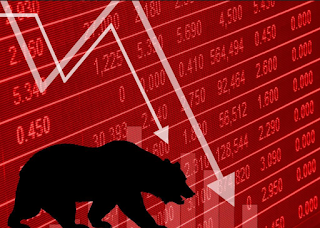The
stock market may be older than you can imagine. And that does not
mean that the methods of analysis of decades ago were invalidated.
Even with all the technological devices that support the analysis,
Dow's theory, created almost a century ago, remains the foundation
for doing technical analysis, evaluating stock price and market
philosophy.
Charles Henry Dow, founder of the Dow Jones & Company, developed the theory. But later, it was enhanced and organized by SA Nelson, author of "The ABC of Stock Market Speculation," William Peter Hamilton, Robert Rhea and George Schaefer, as there was no compiled material, but several editorials published by Dow at The Wall Street Journal, of which he was owner and publisher.
The set of hypotheses and theorems that shape this method of analysis are extremely valid for the present day and have become axioms on Wall Street, which have applicability to individual actions, but are broader in scope, and are best applicable to groups of actions or market indices.
Charles Henry Dow, founder of the Dow Jones & Company, developed the theory. But later, it was enhanced and organized by SA Nelson, author of "The ABC of Stock Market Speculation," William Peter Hamilton, Robert Rhea and George Schaefer, as there was no compiled material, but several editorials published by Dow at The Wall Street Journal, of which he was owner and publisher.
The set of hypotheses and theorems that shape this method of analysis are extremely valid for the present day and have become axioms on Wall Street, which have applicability to individual actions, but are broader in scope, and are best applicable to groups of actions or market indices.
Dow
Theory
• Dow constructed two
indexes:
• Dow Jones
Industrial Index (DJII)
• To identify the
health of blue-chip companies which make goods • Dow Jones
Transportation Index
• To identify the
health of companies which distribute goods
Basic
Tenets of Dow Theory
1.The averages discount everything except acts of God
2.There are three types of trend Major trends go through
three phases
3.Volume should confirm the trend
4.Price action determines the trend
5.The
averages must confirm each other
Dow Theory is the most famous method of identifying
major trends in the stock market, very much focused on the market
direction. Dow used price behaviour is the stock market as a
barometer of the business conditions.
Of all, I can't stress enough about trend. The
importance of follow a trend and not to go against trying to guess a
possible reversal is of summit importance. Refer for charts bellow
for reference;
Using
multiple time frames really helps to identify the trend. Markets
trend by nature. Although we may see shorter-term fluctuations that
may move counter-trend, the odds always favor prices heading in the
direction of the Primary Trend. This is the trend-following
community’s favourite tenet, of course. There is no simple
definition of a trend, other than a series of higher highs and higher
lows for an uptrend, and lower lows and lower highs in a downtrend.
The
principle here to keep in mind is that the probability is always that
the trend in place will continue, rather than reversing. That’s the
main point we want to keep in mind from this particular Dow Theory.
I hope this
has given some light on how I approach the marketplace using 130 year
old analysis. And still works today!








Comments
Post a Comment